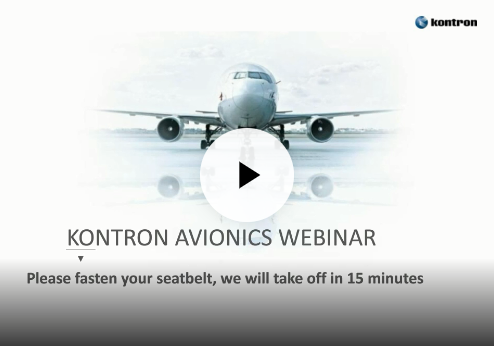Brauchen Sie Hilfe? Dann kontaktieren Sie unser Support Team:
Support kontaktierenBrauchen Sie Hilfe? Dann kontaktieren Sie unser Support Team:
Support kontaktierenUPCOMING Webcasts
We currently have no webcasts scheduled.
Please check out our Recorded Webcasts below
RECORDED Webcasts
The new Sensor Open System Architecture (SOSA) being spearheaded by the Air Force, Army, and Navy seeks to develop standards and architectures that provide uniformity, interoperability, and open architectures while simultaneously driving down procurement and operational costs for new C4ISR platforms.
This one-hour Technical Webinar from the editors of Tech Briefs Media examines the impact this new initiative will have on OpenVPX. Three of the industry's leading experts provide insight on this important topic.
Modern processors, graphics processors, FPGAs, etc. provide untold performance benefits, but also generate excessive amounts of heat. Getting rid of this heat and keeping electronics cool is essential for designers of electronic warfare, radar, and other processing-intensive military applications. This has become even more important as the electronics footprint continues to shrink.
This webcast of industry experts will cover various methods for solving thermal management challenges in military systems when integrating commercial processing technology.

Solving the certification, installation & security challenges for the connected aircraft
Delivering a consistently high-quality video experience to consumers is a huge endeavor for broadcasters and distributors because it requires them to navigate an increasingly complex ecosystem – fraught with multiple devices and screen sizes, various operating systems and, perhaps most importantly, different encoding schemes.
This webinar will look at the challenges faced by major broadcasters, pay-TV providers and online video providers when it comes to navigating the various encoding standards such as MPEG-DASH, MPEG 4/H.264, and HEVC.
Specifically, we look at the pros and cons of the various encoding standards and discuss how they can efficiently process and package and transport IP video to the end device. Will there ever be a unifying standard for online video encoding?
And if not, what does this mean for video providers? Can distributors and broadcasters meet the growing requirements for delivering IP video to various different devices without one consistent standard? How will providers be impacted by growing demand for 4K/UHD video?
1. Will there ever be a unifying standard for online video encoding? Which one is most likely to be widely adopted?
2. If not, what does this mean for video providers? Can distributors and broadcasters meet the growing requirements for delivering IP video to various different devices without one consistent standard?
3. How will providers be impacted by growing demand for 4K/UHD video? (Note: can be tailored depending on the type of providers speaking at the event, e.g. broadcast/OTT providers, ecosystem providers, encoders, etc.)
4. Where can providers realize the best cost savings in encoding/transcoding?
Joint webinar: How UPC Hungary rapidly rolled-out new value-add OTT video service to 500k+ subscribers

Real World Use Case:
How UPC Hungary rapidly rolled-out new value-add OTT video service to 500k+ subscribers
Date: September 8, 2015
Speakers: Kontron, Intel, UPC, ActiveVideo
Within the last year, cable operator UPC Hungary has demonstrated just how well Internet video services can integrate with traditional pay-TV services, with YouTube naturally proving to be the biggest attraction with subscribers. Last September, UPC Hungary announced that customers were viewing more than one million minutes per day of YouTube content during the first three months of availability on TV, with the average viewing time per session at about 45 minutes.
To make YouTube available on existing STBs, UPC Hungary virtualized boxes’ functionality in the cloud, using the CloudTV Streamcast platform from ActiveVideo. But what was the overall approach that enabled UPC to deploy the service so quickly? What cloud infrastructure was implemented to ensure the network could keep up with sharp spikes in demand for more video?
In this webinar you will learn:
- Resolved challenges in video transcoding, virtualization, and maximizing channel densities
- Leveraging the Intel Iris Pro Graphics Engines with Media Server Development Kit
- The complete package using highly scalable HA converged infrastructure COTS servers
Watch the recorded webinar here: http://www.lightreading.com/webinar.asp?webinar_id=540
This webinar introduces one of several new medical applications based on the Kontron COMe-cSE6 with a SoC (system-on-chip) of the 2nd Generation AMD G-Series. Attendees will not only gain a better understanding of the major differences in technology they will also able to identify the most appropriate framework for building their professional, medical-grade image processing systems.
Please find the recorded on-demand webcast here.



